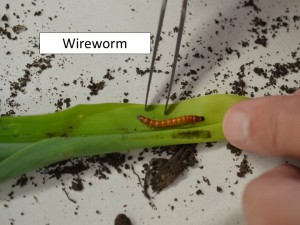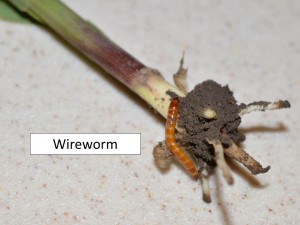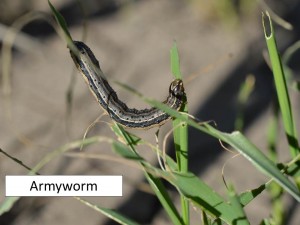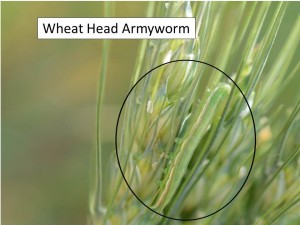–Dr. Jeff Whitworth and Dr. Holly Schwarting
Corn
Plants in north central and south central parts of the state are finally starting to grow. All the cloudy, wet conditions have not been the best for corn development and many fields are a little more chlorotic looking than usual for this time of year. This stalled development usually allows pests more time to feed and thus cause damage. Seed treatments only provide protection for 3 to 4 weeks (check label) from planting, so most of that protection has dissipated. However, we have not seen nor heard about much pest activity yet. A few thin stands have been noted which can be caused by many different pests, probably most common so far has been wireworms. Generally, however, most fields are past seedling damage.
We have received a few calls about armyworm activity in wheat and sorghum, so when these larvae pupate and then emerge as adults to lay eggs, most corn will be in the whorl stage so there may be some whorl-stage leaf feeding which is always highly visible but causes very little actual impact on yield.
Wheat
We have not seen any “worms” in wheat, but have received several calls about armyworms feeding on leaf tissue. Armyworms should move to another grass host, i.e. corn, sorghum, brome, etc. as the wheat begins to senesce. They actually devour leaf tissue and thus are not actually feeding on the grain.
If there are thin, light green or tan worms feeding on the wheat head they are probably wheat head armyworms (see photo). They can and will actually feed on the grain whereas the armyworm feeds on the foliage around the grain – not the grain itself.
If you decide to treat either pest, please refer to the Wheat Insect Management Guide, 2015: http://www.ksre.ksu.edu/bookstore/pubs/MF745.pdf and make sure to check the label for the preharvest interval (PHI) if spraying wheat this close to harvest.



